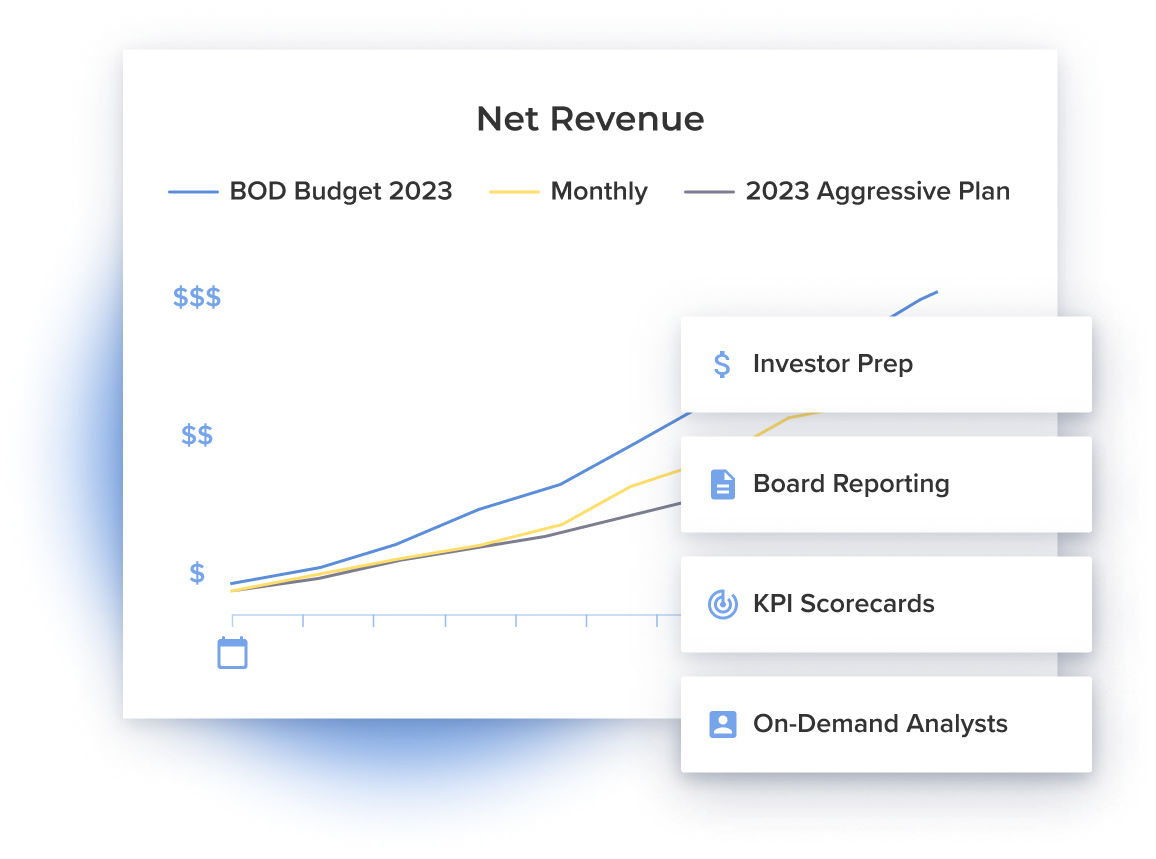The Case for Data-Driven DTC eCommerce Forecasting

The world of DTC e-commerce is exploding thanks to a rise in digital sales channels and a pandemic-led shift in consumer shopping habits. The number of DTC e-commerce buyers is expected to hit an all time high of more than 103 million in 2022 and major brands are taking note. Nike is cutting ties with retail partners and betting big on the growth of DTC sales, and Adidas, UnderArmour, and Pepsico are all following suit.
With massive growth in the industry, we’re seeing a record number of new DTC companies entering the ring. But many struggle to compete because the nature of DTC e-commerce is very operationally complex. It’s not uncommon for companies to:
- Run out of capital because they failed to plan for high advertising expenses or delayed inventory shipments
- Miss bottom line goals because of unexpected discounting
- Miss topline goals because of optimistic repeat purchase assumptions
To prevent these issues, DTC brands need an e-commerce data management solution that helps them solve for the unique challenges within this industry.
Why E-Commerce Data Management is Harder Than You’d Think
One major challenge that DTC e-commerce brands face is the sheer volume of data they need to manage and analyze to make strategic business decisions.
Founders need to juggle so many balls at once — like balancing inventory purchases with ad spend, predicting sales, managing fulfillment, and containing operating expenses. The data from these various legs of the business lives on different platforms so it’s not uncommon for DTC founders to jump from Facebook Ads Manager to Excel, Quickbooks, Shopify, and more to gather disparate data points that help them make a single decision.
Just as it sounds — this process of app-shifting is a pain to manage, incredibly time consuming, and can often cause errors.
An e-commerce data management solution that consolidates important information in a single dashboard is essential to help brands contextualize all of their data and make strategic decisions about what to do next. With all of the most important data points in one place, brands can break down silos between employees who manage different aspects of the business and become smarter about how decisions in one area impact the ability for another to operate successfully.
DTC Digital Advertising is Very Expensive
Many of the most important data points themselves are also tricky to analyze and manage. Advertising costs are a prime example.
While some big DTC brands are able to open brick and mortar stores or eventually opt to broker relationships with wholesale partners like Target or Walmart, most still rely strictly on online sales. And online, customer acquisition costs are huge.
Notable brands spend a huge chunk of their budget on marketing. Before the DTC mattress company Casper went public, the company’s S-1 revealed that in 2018, it spent $157.8 million on marketing, on revenue of $357.9 million — resulting in a loss of $92 million. At Bainbridge, our benchmarks show that ad spend is second only to inventory as a consumer of cash.
High advertising spend can be a make or break decision for many brands — especially when you’re racking up debt to pay for inventory and ad spend in advance of sales. Data management solutions for e-commerce brands need to allow founders to game play certain “what if” scenarios that help them plan for various amounts of ad spend, and how that impacts inventory levels and cash reserves. Look for a tool with smart forecasting functionality that is specifically designed to accommodate the variables that are most important to e-commerce founders.
DTC E-Commerce Inventory Management is Tricky
Another complexity for DTC brands is inventory management. DTC brands often pay for inventory long before they sell it — which requires them to have a lot of capital on hand.
It’s not easy to decide how much inventory to buy. Higher quantities may provide a price break, but storage costs — and environmental waste — are also huge factors to consider if the products don’t move. There’s a delicate balance between preparing for a surge in sales and tying up precious capital because you overstocked.
This game becomes even tougher when you factor in solutions like discounting. Brands need to be aware of how discounting and price changes affect predicted revenue, and then also how that new revenue prediction trickles down to impact ad budget and cash reserves.
Just as with advertising spend, brands need forecasting tools built within their e-commerce data management platform that allow them to account for varied inventory levels and plan for unexpected shipping delays that leave products out of reach for months at a time.
Solving E-Commerce Data Management and Forecasting Challenges
DTC founders are inundated with data and constantly have to evaluate how changes in inventory, ad budget, and cash reserves impact their business at any moment in time. To clearly see how all the pieces fit together — and how changes to one impact the others — DTC brands need an e-commerce solution that unifies information from different platforms and allows for forecasting unlimited “what if” scenarios.
At Bainbridge, our platform does just that. We understand the unique challenges of DTC founders and have built a solution that prioritizes the bigger picture and allows you to plan for any future.
Interested? Try it today.
Subscribe to our newsletter

Ready to see what you can do with Drivepoint?
Learn how other consumer and CPG brands are driving margin and cashflow with Drivepoint







